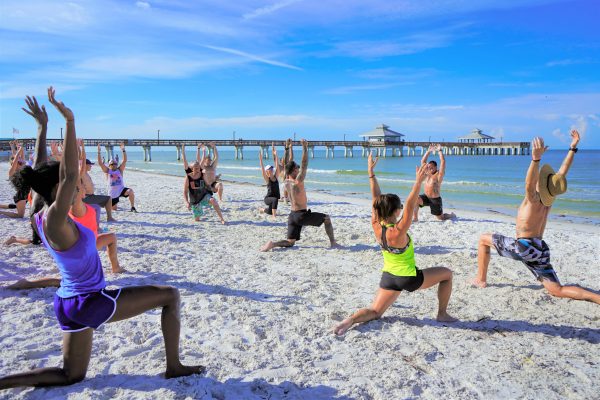Last updated April 2, 2024
Salt therapy is one of the most popular alternative and natural treatments for the respiratory system. Fans of salt therapy swear by its anti-inflammatory, beauty and immune benefits while others remain a little more skeptical.
And while salt walls, features and elements are common in most spas today, do they and salt therapy sessions carry any real benefits? Or is it all just a placebo?
In light of the Salt Therapy Association launching Salt Therapy Industry Standards (STIS), we’ve decided to delve more into the treatment. What is it exactly and whether it truly carries any real benefits?
The new STIS will provide guidelines, create awareness as well as the resources for the authentic implementation of salt therapy moving forward.
Salt Therapy Explained

Salt therapy is essentially about harnessing the benefits of salt on the body. There are two types of salt therapy: dry and wet.
Dry salt therapy—or halotherapy—is the practice of breathing in salty air. It’s more than just spending a day at the seaside. Halotherapy involves sitting in a room or chamber with tiny salt particles suspended in it, breathing it in and having it absorbed into the skin.
Halotherapy is a popular alternative therapy for those that suffer from breathing and lung-related conditions such as asthma, bronchitis and long-term coughs. It might also help with skin conditions and allergies and may have relaxing effects, too.
Wet salt therapy is also popular and you can easily practice it at home. It often involves rituals like bathing in mineral-rich salty water, salt scrubs and saltwater nasal flushing.
What Are the Benefits?

Salt therapy generally happens in a spa-like room with salt coverage. You might come across two main types of halotherapy: active and passive.
Active halotherapy involves being in a room or enclosed space with a halogenerator. This contraption essentially breaks down salt into tiny particles that circulate inside the room. Basically, you relax in the room, breathing in the salt particles.
The other type of halotherapy that you might still see is passive. This type doesn’t involve a machine but instead you’ll find the room filled with different types of salt. The temperature and humidity of the room is controlled from the outside.
However, STIS now states this passive type of halotherapy is invalid and has little effects or benefits apart from relaxation. Today, dry salt therapy can only be provided by using a professional-grade halogenerator.
For this reason, it’s a good idea to check this with your local halotherapy provider before booking your next session.
How Can Salt Therapy Help?

While the first practices of salt therapy date back to the 12th century, the first health benefits of salt therapy were discovered in the 1800s. Salt miners in Poland would spend all day in the mines, yet they were found to be extremely healthy and conditions such as colds, coughs and other respiratory problems were rare.
Research over time found that it was the salt in the air they’d breathe that kept their lungs healthy and allergy free.
According to the Salt Therapy Association, there are many benefits of halotherapy. These include respiratory care and hygiene, improving the immune system and better appearance of the skin.
As dry salt therapy works by breathing in tiny salt particles, the properties of the salt can enhance lung capacity, boost the immune system and fight allergens and bacteria in the lungs. Due to their mucokinetic and anti-inflammatory properties, halotherapy might be able to help with widening airways and reducing inflammation in the respiratory tract.
Salt also contains a mixture of different minerals. For example, sodium chloride, manganese, calcium and sulfates can increase overall health, especially for those who might be deficient in those minerals.
Halotherapy is also linked to improving conditions such as asthma, common colds, bronchitis, allergies, sinusitis and even ear infections.
Studies have shown that there are no real side effects with halotherapy. So if you think that it could improve your overall health, you might want to give it a try.
Is It Worth the Hype?

In a 2013 clinical trial, 20 people with bronchiectasis tried halotherapy for two months. While no real benefits were found to the salt spray they were using, 65% of participants were happy with the therapy and wanted to continue for reasons possibly related to relaxation and a better sense of well-being.
Many have found halotherapy to be somewhat effective over a longer period of time, decreasing symptoms related to asthma and allergies. Others have found little benefit.
Like with most alternative therapies, results vary from person to person depending on the condition and degree of the ailment. The verdict? As there are few side effects and if salt therapy appeals to you, why not add a bit of salt to your wellness routine?
About Vacayou
At Vacayou [pronounced VACAY – YOU], we believe that travel has the power to change lives. The power to revive, rejuvenate and redirect your inner wellness warrior. And that’s why we’re here. Vacayou brings the world of wellness travel to you!
No matter how far or how adventurous, our team scours the globe to curate the best in wellness travel. But the booking process can often be time-consuming and complicated. We’ve made it much easier for you to search, discover, and book wellness and active vacations. With Vacayou’s Instant Book, your dream wellness getaway is now just one click away.
Start the trip of your lifetime today, with Vacayou. We are here to help create a healthier global community through wellness and active travel.
To keep up with the latest wellness trends and experiences, be sure to subscribe to our newsletter.

